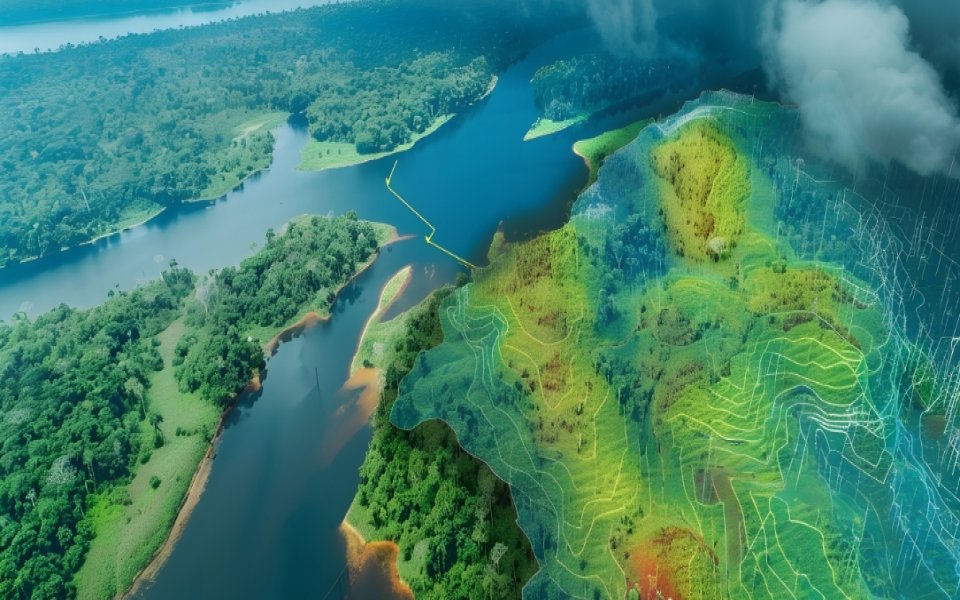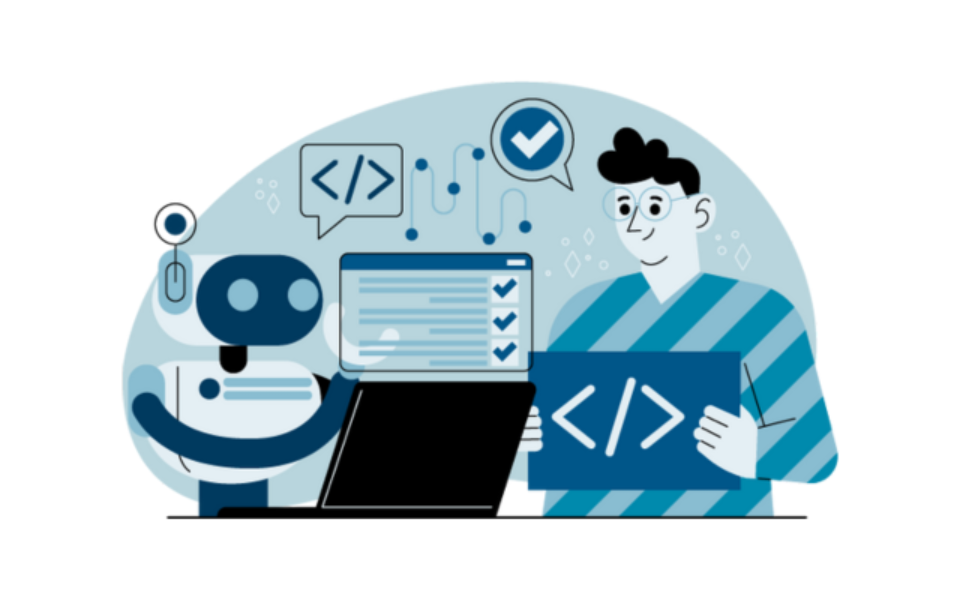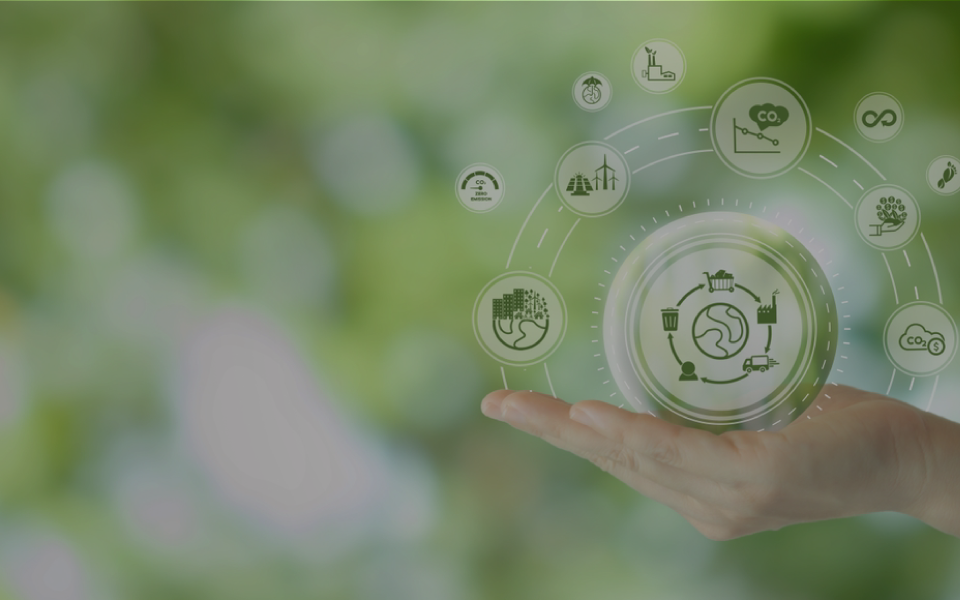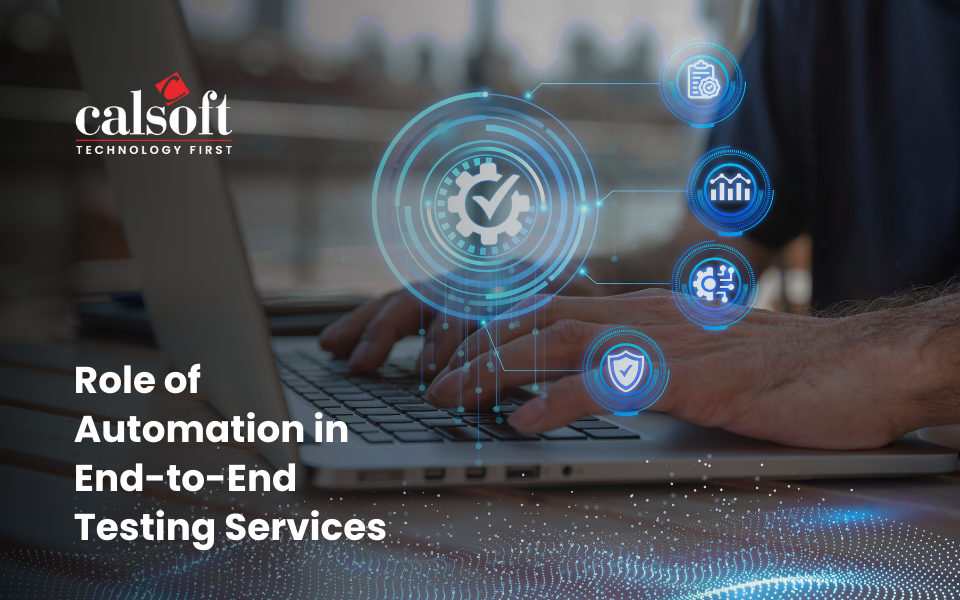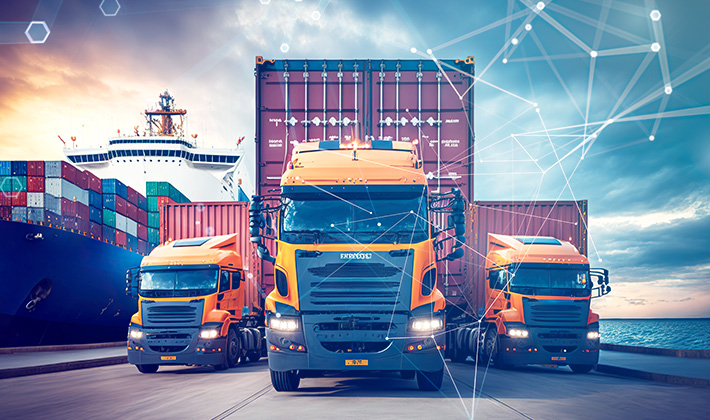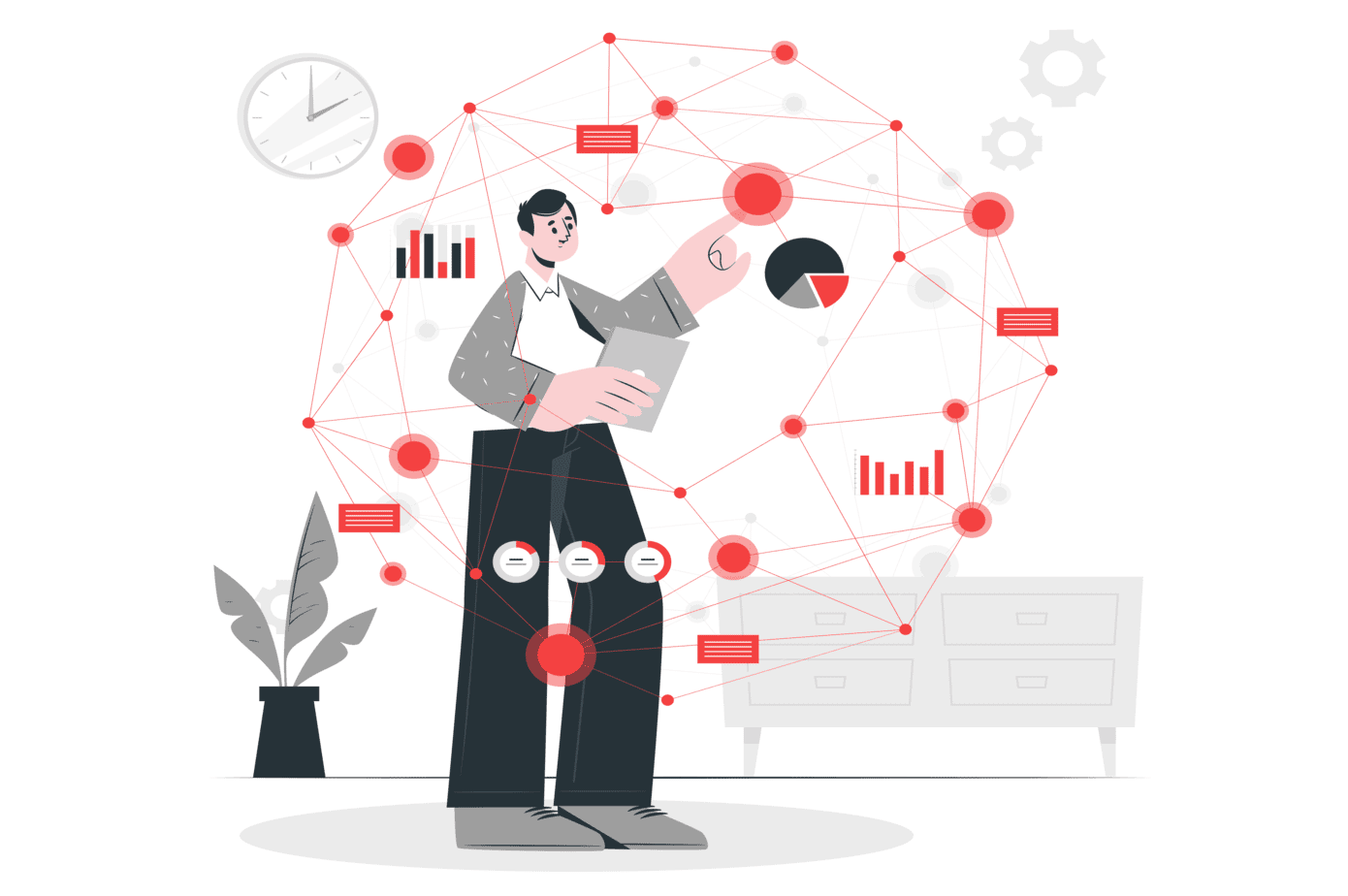Just a few years ago, sustainability was not really a boardroom topic. However, today, environmental challenges such as climate change and plastic can no longer be ignored. Sustainability is the defining business challenge of our generation. Most people have been affected by environmental change in one way or another and that is having a massive impact on business, economic and societal balance. Organizations have a disproportionate responsibility for change since business activity is one of the main causes of environmental harm to the planet. Businesses shouldn’t see sustainability action only as a way to minimize risk. Rather, it should be viewed as an opportunity. Businesses can realize new sustainable revenue streams, optimize their costs, find new efficiencies, and can build new business models based on low-emission, circular, and ultimately regenerative concepts. We must make sustainability profitable and profitability sustainable.
India is on a remarkable development path. On one side, fueled by focused policy attention, the digital enablement of services and utilities has seen an exponential growth. On the other, the commitment to net zero has been led from the top with a vision and a plan.
Digital initiatives like the Aadhaar, financial inclusion, UPI, Digilocker, Open Network Digital Commerce (ONDC), Digital India, and tech-entrepreneurship are indeed pathbreaking. On the climate change side, Prime Minister Modi announced the Panchamrit approach to India’s climate action plan at COP 26 last year. The vision includes a range of commitments, including moving toward 500GW of renewable energy, ensuring non-fossil fuel energy constitutes 50% of India’s cumulative electric power installed capacity by 2030, reducing the carbon intensity of India’s economy by 45% by 2030, reducing one billion tons of carbon emissions by 2030, and achieving net zero in India by 2070. India has made significant strides in increasing total installed renewable energy capacity, increasing from 92.7 GW in 2021 to 152.9 GW, as of February 2022.
Digitalization is one of the six key transformations needed to meet the UN Sustainable Development Goals. By fully harnessing the benefits of digitalization, carbon emissions could be reduced by at least 20% and resource use by up to 90%.A recent NASSCOM report highlights that sustainability could catalyze $150-250Bn of additional technology and operations spend by 2030 to enable use cases like carbon accounting and offsetting, ESG analytics, and supply chain analytics.
However, the efforts around digitalization and sustainability need more integration. Businesses are increasingly accepting that digitalization is a significant enabler of sustainability. Technology can aid and accelerate businesses of all sizes and industries to achieve their sustainability and diversity goals by reinventing the way they measure and manage carbon emissions, waste, and inequality across their operations and value chains. Technology can be an enabler of the realization of the vision of zero emissions, zero waste, and zero inequality.
Most businesses know they need to do more to decarbonize, to reduce waste, and to improve equality. Yet, it’s difficult for many to understand how to get started, or where to focus when they do. One of the biggest reasons is because organizations don’t have the data to provide a full overview of their impact. Lack of data was raised many time by stakeholders at COP27 too.
Solving that challenge requires three foundational steps relevant for any business:
1. Step one is simple: Businesses need to start capturing sustainability data, reliably at source, to give full transparency. In the same way we measure the financial impact of every activity in our organizations, we must integrate non-financial, environmental, and social data into our core business processes as well.
2. Building on the baseline data transparency and reporting, step two is to incorporate that data into materially relevant decisions and processes across an organization to create real, strategic change.
3. Finally, no organization can solve sustainability on its own – all businesses share the responsibility to make real change. Step three is to extend sustainability efforts to suppliers, customers, business partners, across the value chain and through industry business networks.
The above would need actions by both Industry as well as Government with the latter providing the enabling policy and program ecosystem to facilitate the adoption of digital for sustainability. In particular, chasing zero will be facilitated greatly by the infusion of digital technologies in the vision for sustainable growth through a focused policy-level attention on some of the areas around infrastructure, people, innovation and regulatory ecosystem.
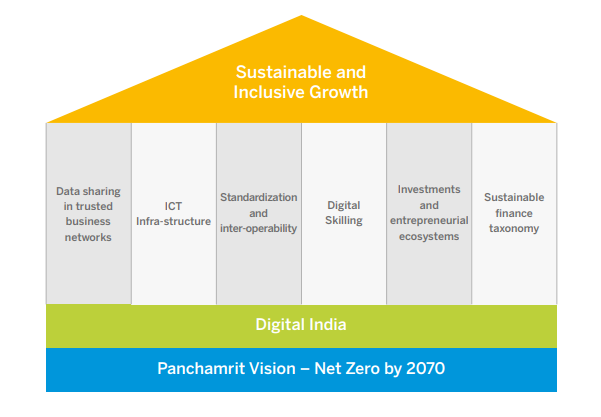
The power of data sharing in trusted business networks
Cross-company collaboration in business networks plays a transformational role in making the green transition measurable and manageable. Bringing together companies in unified business networks and sharing data between them helps to create transparency throughout supply chains and enables businesses to manage ‘green’ lines in addition to top and bottom lines.
The potential of business networks in accelerating the green transition is illustrated by the fact that, for many sectors, most emissions are concentrated in the supply chain.A recent EU-ERT report highlights that, in vehicle manufacturing, more than 80% of emissions are from activities completed by companies further upstream or downstream. Likewise, within the healthcare sector, more than 70% of emissions come from the supply chain through production, transport and disposal of goods and services.
Catena-X is an example of the power of collaborative business-to-business (B2B) networks. Catena-X is an open, scalable network that ensures data exchanges between car manufacturers, suppliers, and ICT companies are secure. This enables peer-to-peer data exchange while ensuring data sovereignty between all companies involved. IDunion is another example of sharing infrastructure with built-in technology to enable verification and confidentiality-protection of shared data. For the green transition, the traceability of data throughout the supply chain also helps to support circular economy objectives and enables companies to track and reduce the carbon footprint.
Upgraded ICT infrastructure
ICT infrastructure is a precondition for the digital innovations that drive the green transition in any economy.As per a recent expert paper on European Roundtable for Industry (ERT), estimates on mobile communications highlight that the level of ‘avoided’ emissions due to mobile communications technologies is ten times greater than the global carbon footprint of mobile networks themselves. 5G is a step-change technology which presents unprecedented opportunities. In terms of energy consumption per unit of traffic (W/Mbps), studies show that 5G is up to 90% more energy efficient than fourth generation networks (4G).
Significant gains in energy efficiency are also possible by running software in the cloud instead of on local servers. Cloud servers have been shown to reduce carbon emissions by up to 98%, while they also require only a quarter of the number of servers.
Standardization and interoperability
Technology can also boost flexibility and collaboration by creating interoperable, standardized frameworks and architectures. As such, industry-driven efforts to establish commonly agreed digital standards to exchange information are crucial.As an example, the Pathfinder Network initiative of the World Business Council for Sustainable Development (WBCSD) is working on the development of developing Scope 3 emissions calculations methodology to foster digital tracking and transparency across supply chains.
Digital skilling
It is a common perception that the efforts toward skilling remain siloed between digital and green skills, failing to prepare individuals to combine both skill sets. Currently, a skills gap exists to support both technical and environmental transformations together. While we have plenty of individuals with digital skills and environmental skills separately, it’s critical to begin to bridge the gap between the two to ensure greater collaboration.
Innovation and entrepreneurial ecosystem
Two types of innovation may be needed for digital sustainability: greening ‘of’ technology and greening ‘by’ technology. While the greening of digital technology is already on the agenda for many governments, the greening by digital technology is still not fully understood.As an example, Greentoken is an innovation helping provide the traceability for circular economy. Built using the idea of multi-fact tokens and blockchain, GreenToken is a multi-commodity cloud platform that enables fact tracing for commingled raw materials to their origin and virtual segregation of facts that can be easily discovered in any product produced.
Sustainable finance
Sustainability technology solutions require investment and policy initiatives. The role of digital technologies needs to find a mention in important policies around sustainability such as public procurement for decarbonization. To summarize, the important role of digital technologies needs to be considered as a across all sustainability initiatives. Data-driven collaboration facilitated by business networks are an enabling platform for digital sustainability innovation. Harmonization of standards and interoperability is required for digitally enabled sustainability reporting and measurement. It may be necessary to upgrade ICT infrastructure to achieve sustainability outcomes. The digital and sustainability skilling ecosystems need greater collaboration. A unified digital and sustainability vision will surely help realize India’s sustainability vision faster and more effectively. The unfolding of this merger between technology and sustainability goals will be an exciting opportunity for industry-government collaboration in near future.






